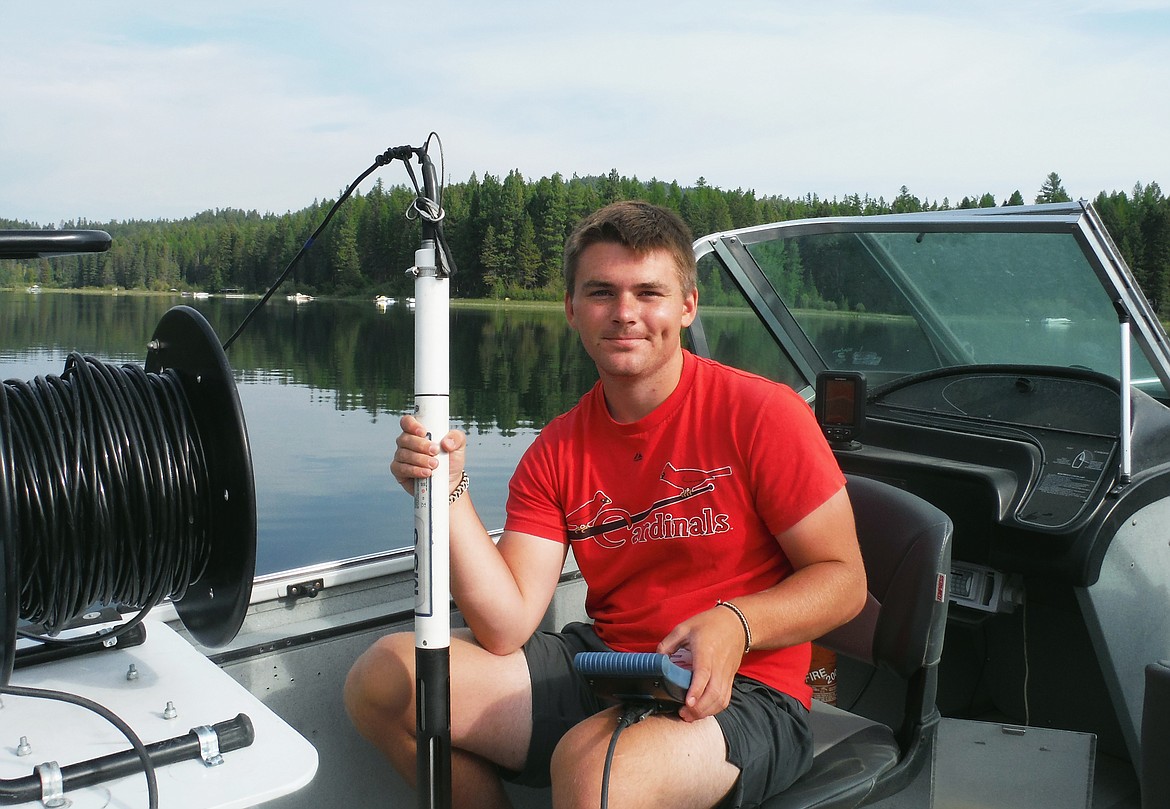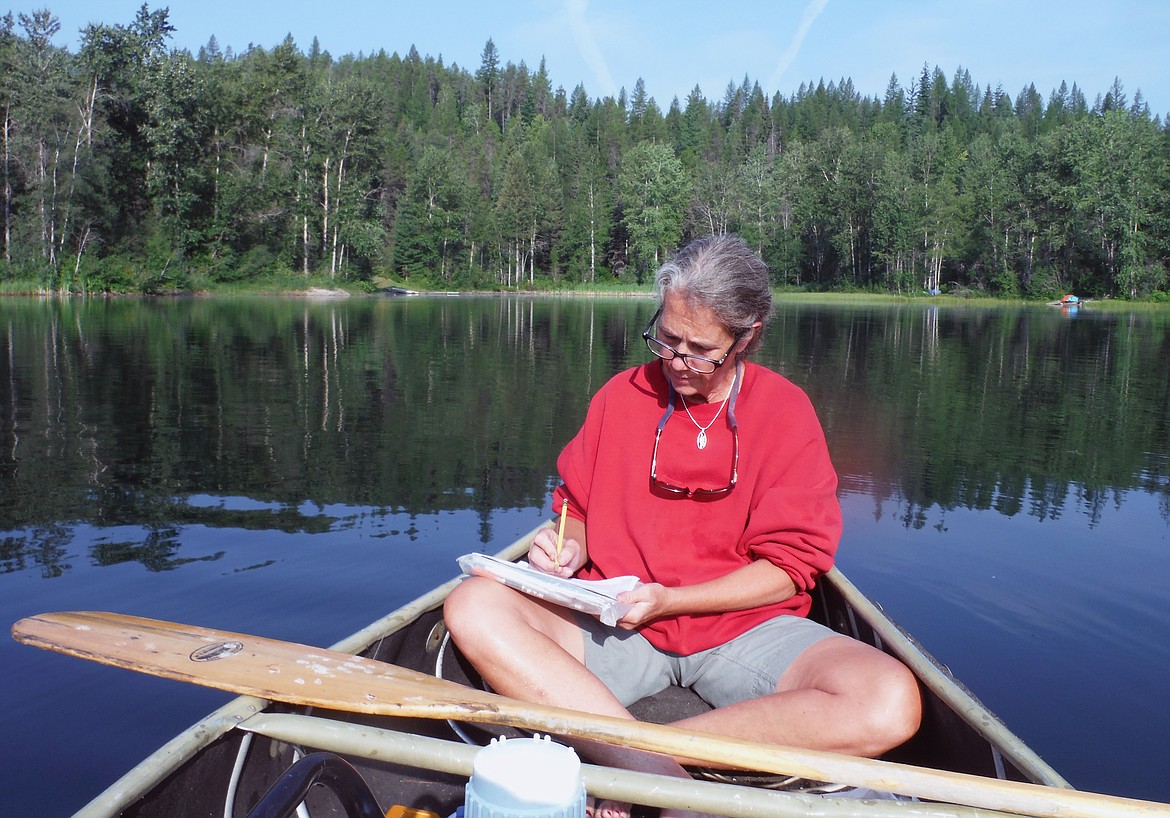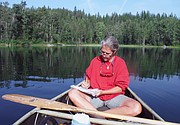Volunteer lake monitoring program keeps watch over region’s water bodies
WHITNEY ENGLAND | Hagadone News Network | UPDATED 4 years, 7 months AGO
Northwest Montana is widely known for its pristine, clear, beautiful lakes and rivers — but as the population increases and other variables come into account the renowned water quality becomes more threatened everyday.
Because of this threat, the Northwest Montana Lakes Network has an important job in monitoring the trends in water quality across 41 lakes in the region. The network funded by the Montana Fish, Wildlife and Parks and managed by the Whitefish Lake Institute consists of a large group of volunteer “citizen scientists” who each collect water samples from specific locations throughout the summer months.
According to WLI Science and Education Coordinator Cynthia Ingelfinger, the volunteers are trained on how to properly collect samples and gather basic measurements that establish long term data trends over time as well as monitor for early detection of aquatic invasive species. This program helps the Whitefish Lake Institute to monitor a larger number of lakes while involving community members interested in positively protecting the lakes that are so important to them.
“With lakes it takes a lot of data, long-term-trends data, to show changes because they’re deep and there’s a lot of water,” Ingelfinger said. “It takes a lot of time for the lake to sort of show the changes that indicate it’s at that tipping point with water quality.”
“It’s an important program in that we have a lot of data and we can see trends and identify which lakes are being stressed, hopefully get a sense of what stressors, then work with managers to kind of alleviate the stress on those lakes,” she added.
The program was established in 2010 when two older lake monitoring programs, one with the Flathead Basin Commission and one with the Whitefish Lake Institute, combined to form the NMLN. The Flathead Basin program, which was called the Volunteer Lakes Monitoring Program, was formed in 1992 so the data trends for the lakes originally in that program date back nearly 30 years.
Now the NMLN program has more than 50 volunteers that collect data at 50 locations on lakes in Flathead, Lake, Lincoln and Missoula counties. Monitored lakes vary in size, depth, surrounding land ownership and boat accessibility, and are selected based on high quality ecological systems without apparent aquatic invasive species introductions.
Without this lake monitoring program, with the partnership from Montana Fish, Wildlife and Parks, Ingelfinger says they wouldn’t have the proper equipment or funding to monitor as many lakes as they can right now and would have zero data from most of the smaller lakes.
“Without the program, there would be no monitoring of many of those lakes,” she said. “They range from Flathead Lake which is huge, and Swan, Whitefish and Ashley that are some of the bigger ones to really tiny lakes, like Bailey and Fish Lake and Halfmoon Lake; lakes that just wouldn’t have the funding to get any monitoring.”
Monitoring lakes and collecting water quality samples is important for several reasons, Ingelfinger notes. The program specifically looks at the level of nutrients in lakes and whether those nutrients are rising due to human development and activity around the lakes. Although nutrients in lakes, such as nitrogen and phosphorus, are good, too much of those nutrients is not good for the balance and natural ecosystem of the lakes, she explained.
“Human activity on the landscape can increase the amount of nutrients into these water bodies so — stormwater, pet waste, fertilizer, septic leachate those are big ones,” Ingelfinger said, explaining that if a lake gets a boost of say phosphorus it can interrupt the food web and lead to a trickle-down effect on water quality. “There’s a lot of good that nutrients do in a lake, but there’s a lot of harm when you increase the nutrients because it sort of tips the system into a more unnatural state.”
Monitoring lake water quality through this program relies on the many volunteers that essentially adopt a lake to watch over. Ingelfinger says the volunteers range from lake property owners to fishermen and even retirees and younger kids wanting to be involved in protecting the lakes that are important to them.
“A lot of (the volunteers) are concerned about their lakes,” she said. “A lot of them have seen changes, so they want to do something.”
Currently after collecting several data points from the lakes throughout the summer months, Ingelfinger compiles a report that shows the long term trends regarding the water quality in these lakes. But, she notes, within the next couple of years NMLN is looking to transition to putting all the data online in a more user friendly format, which will make looking at the data more approachable for everyone.
For more information about the NMLN program or how to get involved, visit https://nmln.info/
ARTICLES BY WHITNEY ENGLAND

Muldown principal approaches role with emphasis on relationships
John Coyne, for his 43 years in education, has always valued relationships.
Bulldog speech and debate team ready for state
The Whitefish High School speech and debate team is heading to the state tournament coming off a successful weekend at the Western A Divisional in Stevensville over the weekend.

Bilingual Montessori preschool opens opportunities in Whitefish
At Big Sky Montessori, children will be greeted with, “Hola, ¿como estás?” They will learn replies like “Muy bien” meaning “very good” or “¡Fantástico!” which is Spanish for “Fantastic!” Throughout the year, the kids, ranging from ages 2 to 6 years old, will be introduced to many Spanish phrases and words in the preschool classroom.





